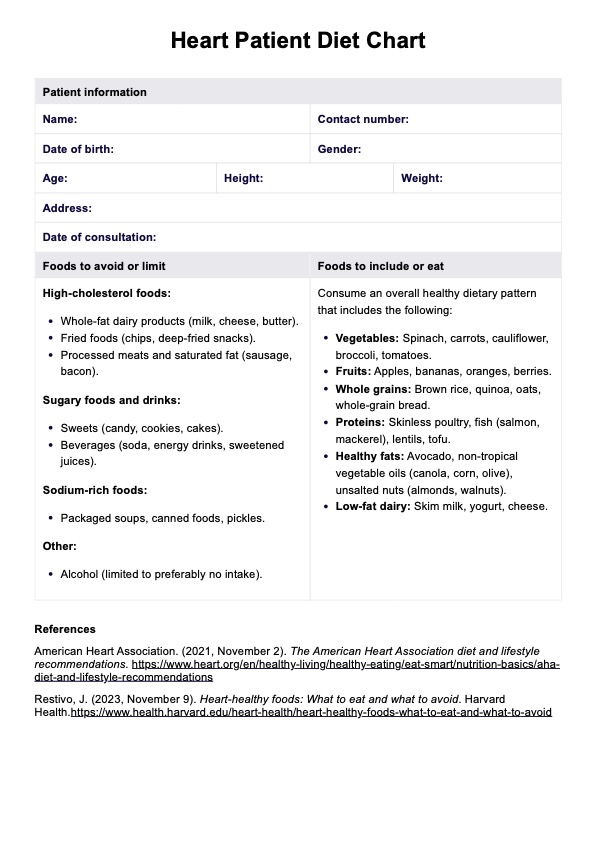The best foods for heart patients include leafy green vegetables, whole grains, lean proteins, and healthy fats like olive oil. These foods help improve blood pressure, reduce bad cholesterol, and support overall heart health.

Heart Patient Diet
Download Carepatron's free Heart Patient Diet Chart PDF and use it in heart-healthy meal planning for your patients.
Heart Patient Diet Template
Commonly asked questions
The Mediterranean diet is considered the number one heart-healthy diet. It emphasizes plant-based foods, healthy fats, and lean proteins like fish. It has been shown to lower the risk of heart disease by promoting better cholesterol levels and reducing inflammation.
Heart patients should avoid processed foods, foods high in saturated fats, and refined carbohydrates, as these contribute to bad cholesterol and high blood pressure. They should also limit their intake of sodium, fried foods, and sugary snacks.
EHR and practice management software
Get started for free
*No credit card required
Free
$0/usd
Unlimited clients
Telehealth
1GB of storage
Client portal text
Automated billing and online payments











